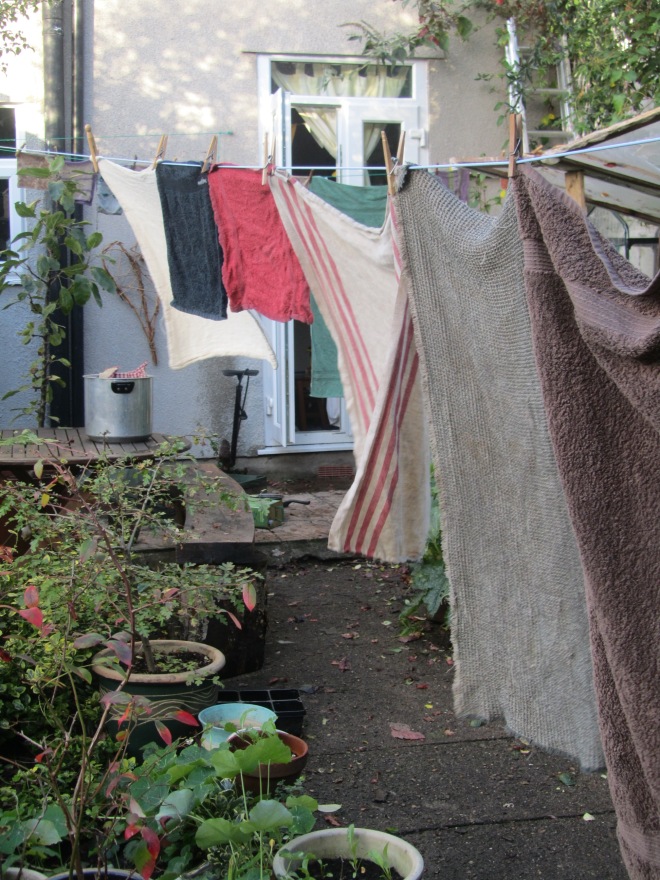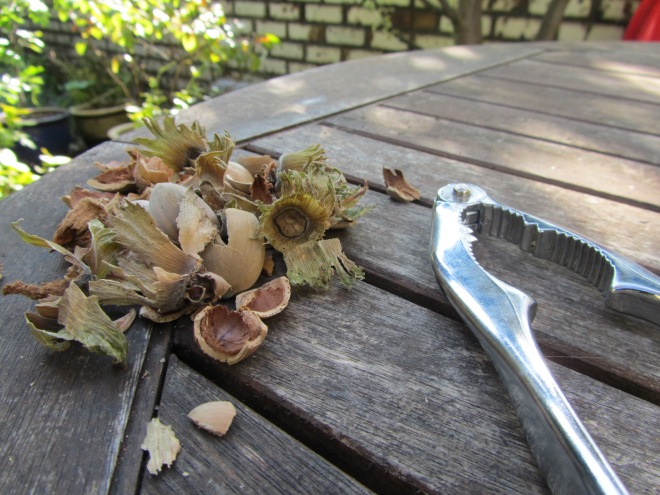The hedgerows are arguably at their prettiest right now. Beaded with ruby hips and haws, brambles drooping under the weight of shiny blackberries, leaves starting to turn fiery hues as the days lose heat and the nights and dawns gain chill; they are abundant. Often abundant enough for you to stock up your natural medicine cabinet whilst still leaving plenty for birds and other wildlife*. And for fellow admirers of these Autumn treasures and their healing potential.
Elderberries
Most Septembers, I take a walk around the lanes and fields near where I live, and follow Glennie Kindred’s delicious recipe for elderberry syrup. Not only is it packed with vitamin-rich, anti-oxidant, anti-inflammatory goodness, but this cough-and-cold remedy has a sweet, fruity taste that my sensory-sensitive kids will tolerate. The addition of warming spices supports that Ayurvedic belief that, in early Autumn, we enter the vata-dominant season where we may encounter problems from cold, dryness and wind. Warming spices and sweet flavours balance vata, so help to optimise health at this time of year.
Elderberry has a centuries-long reputation as a versatile healer – it’s often found in parks and other urban environments as well as the more rural. Although it can seem like a bit of a messy faff separating those little jewel-like berries from their stalks, you might find a meditative peace through the process; the atmosphere that the medicine is created in forming another nurturing ingredient for the storage jar. Elderberries can also be made into jam, cordial, gin, teas, popsicles, sweets and baked into muffins and pies – but shouldn’t be eaten raw.
Rosehips
Rosehips are another antioxidant-laden gift that the early Autumn offers just before the season where viruses become more prevalent. (They may be sweeter when picked after the first frosts, although this seems too late for harvesting them most years my mild part of the UK). Reputed to also benefit osteoarthritic symptoms and hold anti-aging properties, you can take rosehips as a tea or syrup much like elderberries. They have a heap of culinary uses too, although eating them raw isn’t advised due to the tiny irritant hairs (apparently an early source of itching powder: not what you want in your throat!)
Haws (hawthorn berries)
Similarly high in Vitamin-C to protect you from winter coughs and colds, haws also have a history of use in folk medicine for heart and circulatory disorders. For this reason, you are recommended to seek medical advice before taking hawthorn therapeutically if you take medication to treat blood pressure, blood thinning, blood clotting or coronary disorders. I made some haw ketchup a couple of years ago, and enjoyed the deeper, smokier flavour than I’m used to from its better-known tomato counterpart. However, what seemed like a lot of haws and a lot of prep removing stalks gave me a pretty tiny amount of ketchup – perhaps not one for the time-poor forager!
Dandelion root
I confess that whilst I’ve often included the leaves my late-spring salads (and the stems and flowers in my kids’ art and science activities), I’ve never actually consumed dandelion root. However, these earthy, nutrient-dense treasures are said to be potent detoxifiers, with anti-inflammatory and skin-healing properties too. Said to be best harvested in autumn for medicinal purposes – and spring for culinary use – dandelion roots can be made into tinctures, teas, vinegars, poultices and decoctions. This post talks you through harvesting, drying and preparing them, as well as medical contraindications.
Apples
The apple’s medicinal, and nutritional, reputation needs no introduction; this article and this one suggest the healthiest varieties. In our household, apple crumble is the ultimate cold-day comfort food; a potent nurturer on gloomy afternoons. Windfalls are perfect for baking with (and so plentiful right now) that your future tired, poorly or busy self will thank you for popping an extra crumble in your freezer for a winter day when your heart (and tummy) need warming.
Do you have any hedgerow remedies or Autumn healing tips to share in the comments below? Make sure you’re subscribed for future seasonal living ideas and inspiration )O(
Spin Your Circle Bright this week:
Mind ~ I’ve mentioned Glennie Kindred’s works of beauty and wisdom before on this blog, and I’ve learned so much from her about pagan traditions, natural healing and plant lore that I’ll share the link to her website again. Glennie is also one of the founding members of the lovely Earth Pathways Diary. I’d also recommend The Hedgerow Handbook, by Adele Nozedar.
Body ~ Pears and plums might also be found available for foraging right now, along with vitamin-packed hedgerow classic: blackberries.
Heart ~ This beautiful, peace-inspiring creation.
Spirit ~ An area of development in my own spiritual practice is around exploring animism, and growing relationships between myself and the non-human world. This involves seeking permission when harvesting, from acting from a place of respect and dignity consciousness. Read more here and here.
Sharing ~ * a suggested foraging rule is to take no more than 30% of the crop that is there – and to follow this foraging code in the UK.











